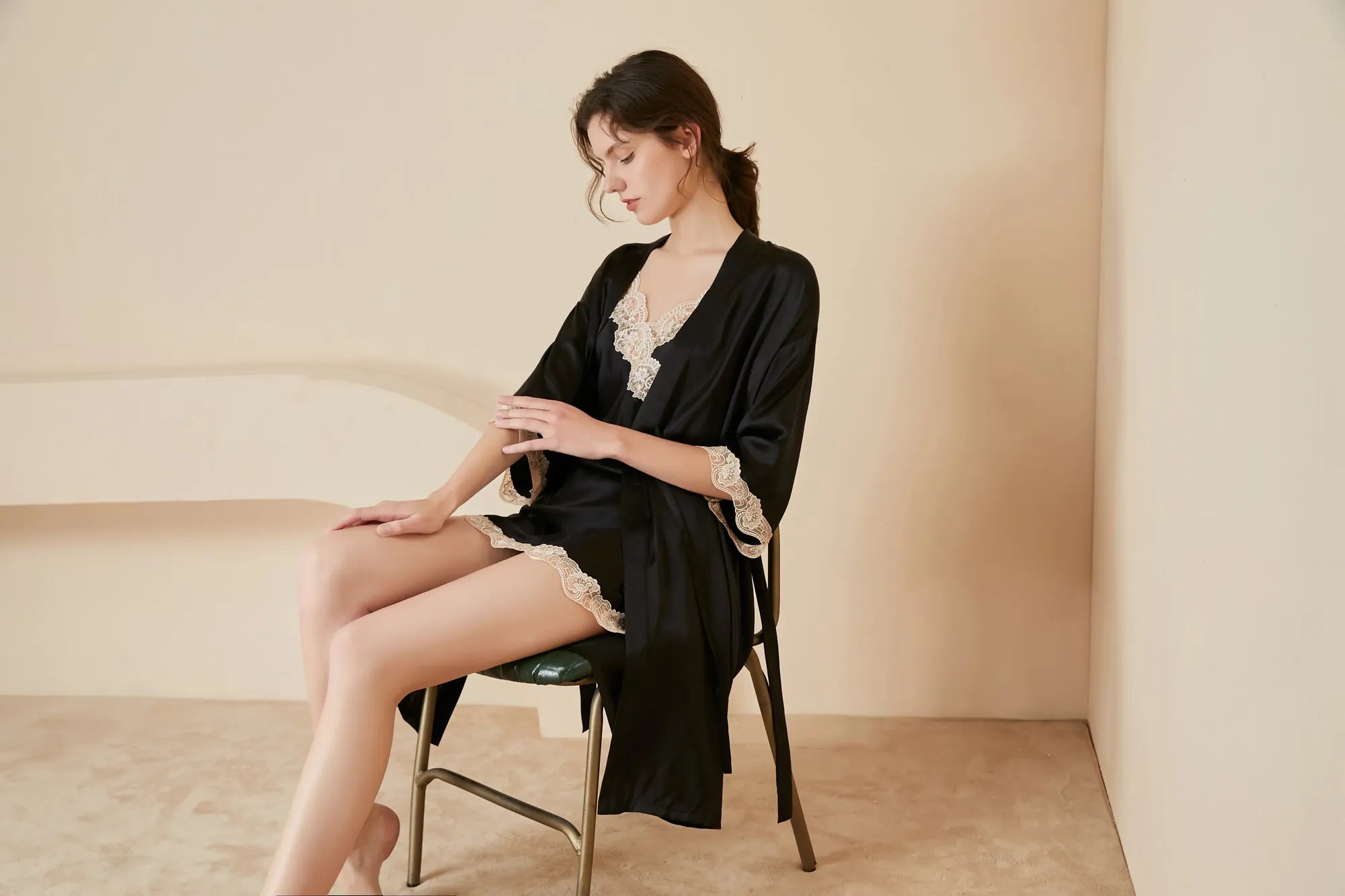Chinese Silk Robe Mens: A Timeless Fusion of Tradition and Modern Elegance
- by wangfred
-

The Chinese silk robe for men is more than just a garment; it’s a symbol of heritage, artistry, and sophistication. For centuries, these robes have been worn by emperors, scholars, and nobles, embodying a legacy that continues to captivate the modern world. In today’s fashion landscape, the Chinese silk robe has transcended its traditional roots to become a statement of timeless elegance, blending cultural richness with contemporary style. This article explores the history, craftsmanship, and enduring appeal of Chinese silk robes for men, offering insights into why they remain a coveted wardrobe staple.
The Historical Legacy of Chinese Silk Robes
Ancient Origins and Imperial Prestige
Silk production in China dates back over 5,000 years, with legends attributing its discovery to Empress Leizu. By the Shang Dynasty (1600–1046 BCE), silk had become a symbol of wealth and power, reserved for royalty and high-ranking officials. The Zhou Dynasty (1046–256 BCE) saw the emergence of formalized robe designs, characterized by wide sleeves and intricate embroidery, reflecting Confucian ideals of harmony and order.
Ming and Qing Dynasty Evolution
During the Ming (1368–1644) and Qing (1644–1912) dynasties, silk robes became highly codified. The changpao (long robe) and magua (riding jacket) emerged as staples, with colors and motifs denoting rank and status. Imperial yellow, for instance, was exclusive to the emperor, while dragon patterns symbolized supreme authority. These garments were not just clothing but narratives of social hierarchy and cultural identity.
The Art of Craftsmanship
From Silkworm to Luxurious Fabric
Creating silk involves cultivating silkworms on mulberry leaves, a process known as sericulture. Each cocoon yields a single thread, which is carefully reeled, spun, and woven into fabric. Traditional looms, such as the drawloom and jacquard, enabled artisans to produce complex patterns, transforming raw silk into masterpieces of texture and sheen.
Dyeing and Embroidery Techniques
Natural dyes derived from plants, minerals, and insects were used to achieve vibrant hues. Indigo, safflower, and gardenia created a spectrum of colors, while embroidery techniques like su (plain stitch) and xiang (raised stitch) added dimensionality. Motifs often drew inspiration from nature and mythology, such as cranes for longevity or clouds for prosperity.
Design Elements and Symbolism
Colors and Patterns
Deep blues, emerald greens, and crimson reds dominate traditional designs, each carrying auspicious meanings. Geometric patterns, floral arrangements, and animal motifs are meticulously arranged to balance aesthetics and symbolism. For example, the Twelve Symbols of Imperial Authority, reserved for emperors, included the sun, moon, and constellations.
Modern Interpretations
Contemporary designs simplify traditional elements for versatility. Minimalist robes might feature subtle embroidery along collars or hems, while bold patterns appeal to avant-garde tastes. The fusion of Mandarin collars with Western tailoring has also gained popularity, offering a bridge between cultures.
The Modern Appeal of Silk Robes
Versatility in Styling
Today’s silk robes effortlessly transition from loungewear to statement pieces. Pairing a robe with tailored trousers and loafers creates a sophisticated evening look, while layering it over a turtleneck adds winter-ready elegance. Designers also experiment with shorter hemlines and asymmetrical cuts to suit dynamic lifestyles.
A Sustainable Fashion Choice
Silk’s biodegradability and durability align with eco-conscious values. Unlike synthetic fabrics, silk production relies on renewable resources, and its longevity reduces the need for frequent replacements. Investing in a silk robe is both a nod to tradition and a step toward sustainable fashion.
Care and Maintenance Tips
- Hand wash in cold water with mild detergent.
- Avoid wringing; gently press out excess water.
- Dry flat away from direct sunlight to preserve color.
- Store in a breathable garment bag to prevent moth damage.
The Chinese silk robe for men is a testament to humanity’s pursuit of beauty and meaning through fabric. Its journey from ancient looms to modern runways underscores a universal truth: true elegance is timeless. Whether worn as a tribute to heritage or a bold fashion choice, the silk robe remains an enduring icon of cultural pride and sartorial innovation. Embrace its legacy, and let every thread tell your story.












